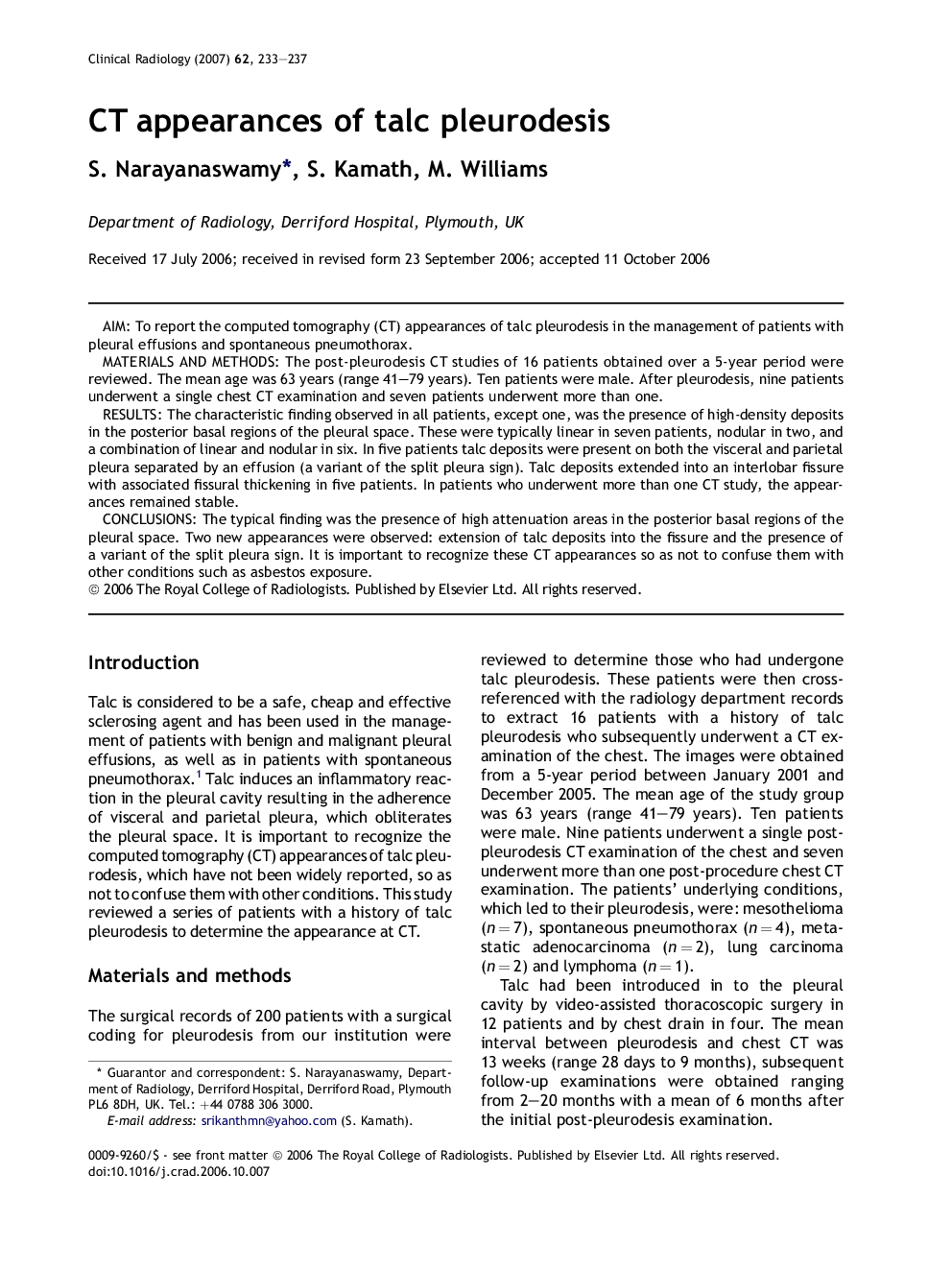| Article ID | Journal | Published Year | Pages | File Type |
|---|---|---|---|---|
| 3983528 | Clinical Radiology | 2007 | 5 Pages |
AimTo report the computed tomography (CT) appearances of talc pleurodesis in the management of patients with pleural effusions and spontaneous pneumothorax.Materials and methodsThe post-pleurodesis CT studies of 16 patients obtained over a 5-year period were reviewed. The mean age was 63 years (range 41–79 years). Ten patients were male. After pleurodesis, nine patients underwent a single chest CT examination and seven patients underwent more than one.ResultsThe characteristic finding observed in all patients, except one, was the presence of high-density deposits in the posterior basal regions of the pleural space. These were typically linear in seven patients, nodular in two, and a combination of linear and nodular in six. In five patients talc deposits were present on both the visceral and parietal pleura separated by an effusion (a variant of the split pleura sign). Talc deposits extended into an interlobar fissure with associated fissural thickening in five patients. In patients who underwent more than one CT study, the appearances remained stable.ConclusionsThe typical finding was the presence of high attenuation areas in the posterior basal regions of the pleural space. Two new appearances were observed: extension of talc deposits into the fissure and the presence of a variant of the split pleura sign. It is important to recognize these CT appearances so as not to confuse them with other conditions such as asbestos exposure.
